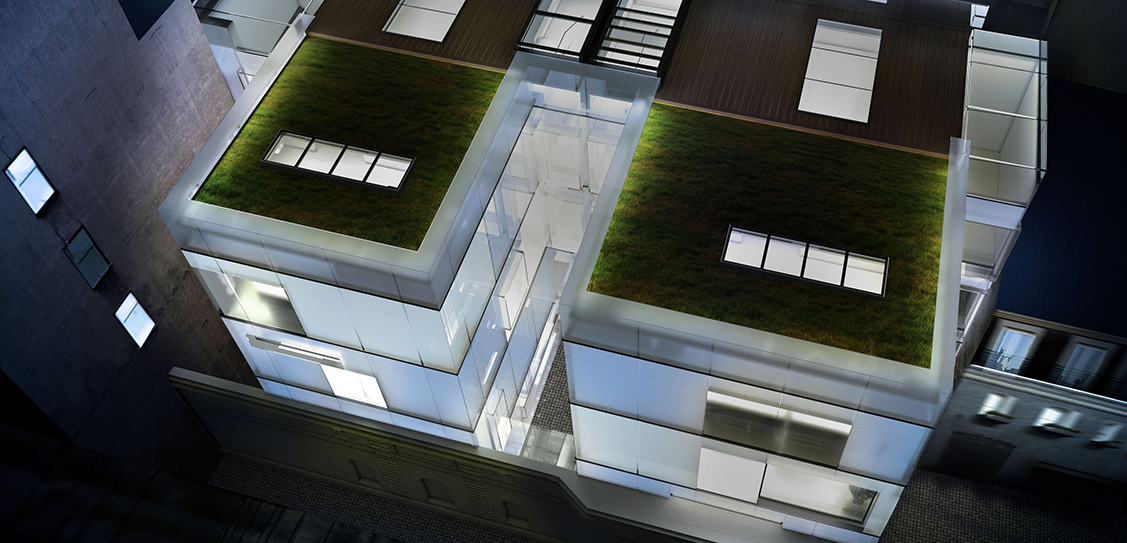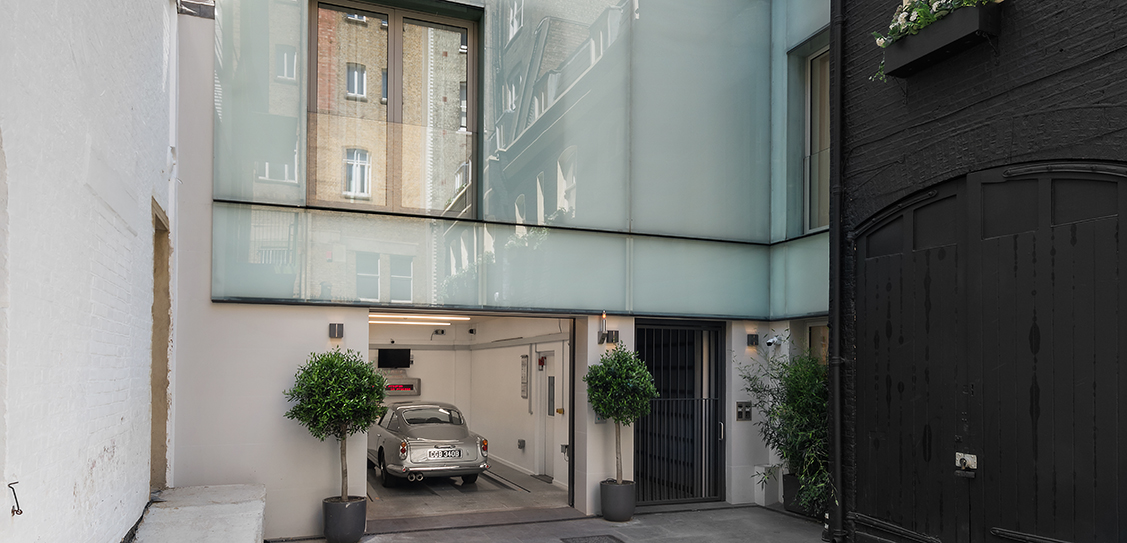The mews site used to house former Italian Count Dino Grandi's 'lost' mansion, of which only the black-brick Edwardian stables survive. Grandi was Italy's UK ambassador under Mussolini.
Considered by Westminster City Council to be ‘an architectural gem’ and ‘a contemporary addition to the Mayfair Conservation Area’, the design has set a quality standard that the Council are keen to promote more of within Westminster. The buildings deliver high-energy performance with a double skin glass façade, green roof, ground source heat pumps and generous floor to ceiling heights.
The Glass Mansion provides in total 13,583 sq ft of luxurious living space across four levels with an additional three basement levels that include a cinema, private spa and swimming pool. There is also a spacious four-car garage and 226 sq ft garden patio at ground level together with a 1,251 sq ft roof garden.
Two translucent, glowing forms amongst the dense and complex urban context identify the buildings. Light and privacy are balanced through the optimal use of the solar orientation of the site to all habitable rooms via translucent panels and clear openings. New interaction has been created between the street and the mews, and the new buildings will be ‘viewed as light at the end of the tunnel’. The composition of the façade is an interpretation of Japanese sliding screens made of either white translucent paper, which provides light, warmth and intimacy (the shoji), or opaque paper for privacy and interaction between the outside and the inside (the fusuma).
Made of one layer of frosted glass applied on both sides of a steel frame, the façade has its outer skin running consistently on all façades, whilst its inner skin changes to produce the opaque or the translucent finish required. Only the windows interrupt the outer skin leaving the space fully connected to the outside.
Like La Maison de Verre, the houses use skeleton frame steel construction allowing a free plan and therefore a flexible interior layout and can potentially be divided by permanent or movable screens in each of the upper floors. Whilst the generous ceiling heights not only allow natural daylight to flow inside the rooms but also to give the building the potential to be adaptable for other uses in the future.
The main living rooms are located on the top floor and are capped by the two rooftop gardens. Informal family rooms and a study span the second floor, while the first floor below it encompasses two sprawling bedroom suites and a third smaller bedroom. There are four more bedrooms on the ground level, where there is also a techy garage with stackers to accommodate four vehicles.



